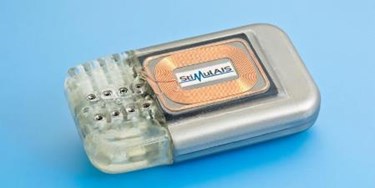New Implant Offers Electrostimulation Treatment For Idiopathic Scoliosis

A consortium of European scientists has developed a prototype implant that could provide treatment for young adults suffering from idiopathic scoliosis. By delivering pulses to correct a nerve imbalance in the spinal cord, researchers believe that they could prevent life-threatening deformities with the minimally invasive new method.
Adolescent Idiopathic scoliosis (AIS), a spinal curvature with no known cause, is the most common cause of spinal deformity and usually develops in children around 10 years old, during the growth spurt just before puberty. While most cases are mild and do not require intervention, moderate to severe cases can lead to lung and heart damage, chronic back problems, and a noticeably deformed appearance.
Traditional treatment methods include corsets, back braces and, in the most severe cases, the surgical implantation of metal rods, plates, and pins to correct the curvature, which can be extremely complicated and dangerous, and is only possible once the spine has fully developed. Currently, there is no treatment to stop the progression of the condition or cure it.
To address this unmet need, the European Union (EU) has launched the StimulAIS project, aimed at developing an alternative to existing treatments that can begin as soon as the disease is detected. The project brought together five research teams from Germany, Spain, and France who are researching the possibility that AIS is caused by a disease of the central nervous system and could be corrected with electrostimulation.
“According to this theory, the connection between the nerves and the relevant muscles is impaired, but only on one side of the back,” explained Andreas Heinig, a scientist at the Fraunhofer Institute, in a press release. “When muscles on the healthy side contract, the muscles on the unhealthy side fail to receive the signal to balance the contraction out. This causes the spinal column to twist and buckle.”
To correct this imbalance, the Fraunhofer team has developed an implant that can be placed in the groin with several electrodes strategically placed on both sides of the spine. Electrodes on the healthy side record contractions, and doctors can then administer stimulation to the unhealthy side. The system collects data and transmits it wirelessly to an external reader so that the therapy can be adjusted to suit the needs of each individual patient. Researchers said that, ideally, patients would participate in 6-8 hours of therapy every day.
According to the Fraunhofer team, the resulting prototype was a group effort on the part of several member teams of the StimulAIS consortium. A team from Valencia designed the external reader, and a French team developed specially designed surgical instruments needed to implant the device and place the electrodes.
“We have clearly shown that this form of therapy is technically feasible,” said Heing. “Now it’s up to future clinical studies to demonstrate that the therapy is medically effective and can cure or at least alleviate scoliosis.”
The National Scoliosis Foundation (NSF) estimates that 7 million Americans, or 2-3 percent of the population, suffer from scoliosis, and 85 percent of cases are idiopathic. The NSF believes many current treatments are ineffective because so much is still unknown about the disorder.
